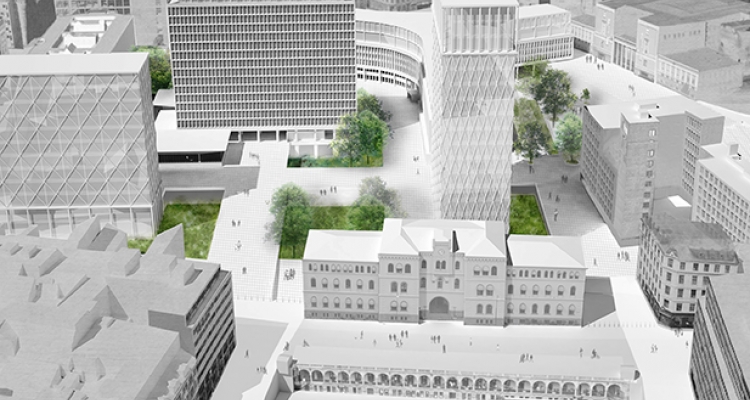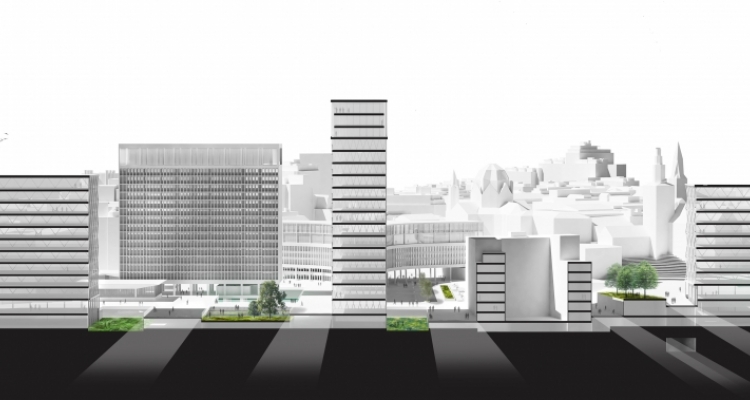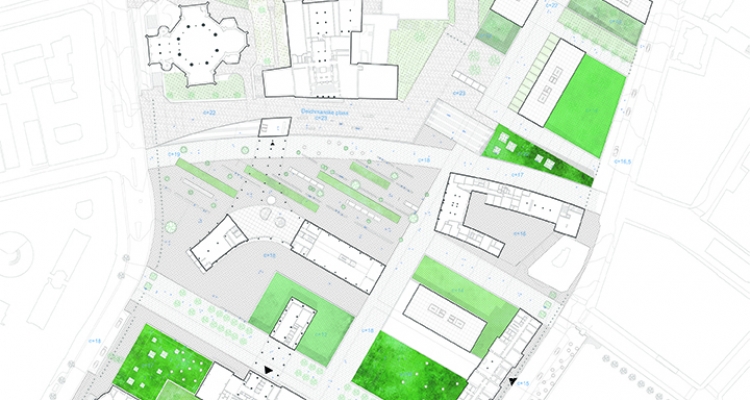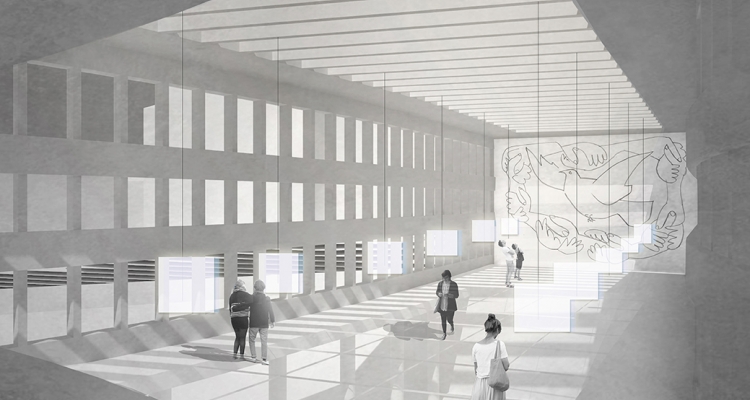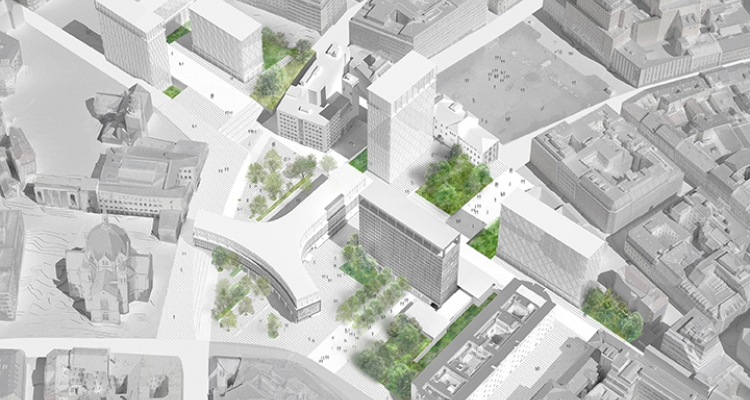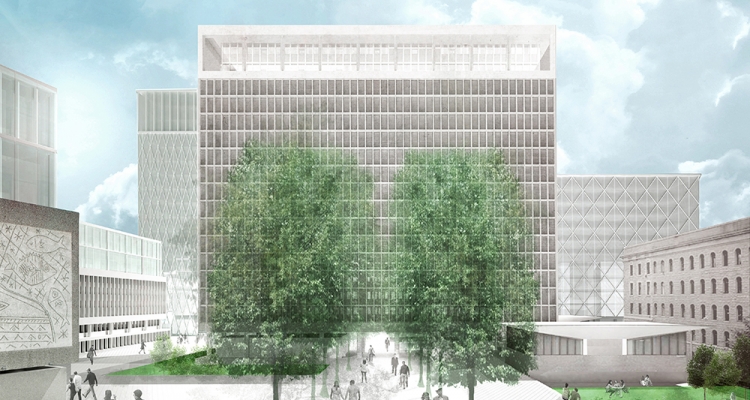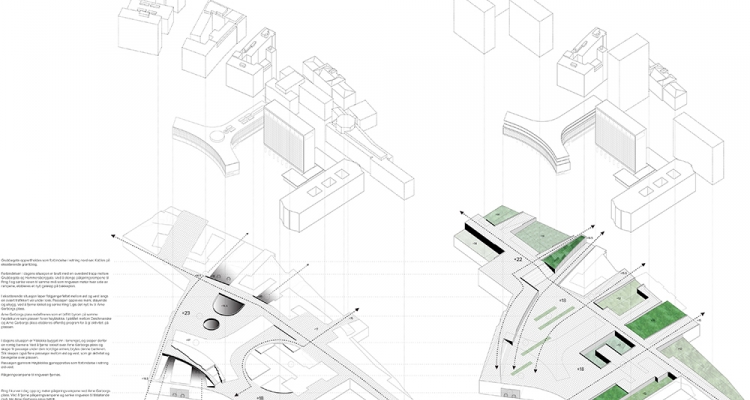OPEN QUARTER
New Government quarter in Oslo, by Team AHO - Oslo School of Architecture in collaboration with Columbia University GSAPP
As one of the teams invited to participate in the Nytt Regjeringskvartal Parallelloppdrag, the AHO Team has actively questioned the given brief and argues for a space of historical continuity and democratic openness. The national government of Norway has the opportunity to build a new symbolic space for democracy and to invest in the regeneration of central Oslo. The AHO Team argues that the investment should enhance the symbolism of the architectural heritage in the area and regenerate the urban conditions. As a result, the AHO Team’s ”Open Quarter” looks how the Nytt Regjeringskvartal can achieve a balance between the reuse of historical buildings and new construction, and give somthing back to Oslo by providing public spaces with better pedestrian connections and public programming.
The AHO Team challenges the conditions of the parallelloppdrag in the following ways:
Lowering Density
Because the government has decided to concentrate most of the ministries on the site and build most of the new buildings south of Ring 1 by 2024, the necessary area produces very tall towers.
The AHO Team proposes an alternative phasing that would lower the height of new towers and make them continuous with the scale of the surrounding city. The alternative phasing distributes the area both south and north of the Ring 1 by 2024, meeting the requirement of 115,000 square meters while significantly reducing the height of new construction. Further office space is created one level below ground, and illuminated with garden atriums. To accomodate the additional office space for 2064, the towers will be renovated using smartworking strategies, which meets the required 35% increase in workspaces. Smartworking is an increasingly common strategy of flexible offices, in which employees can move workspaces to be near different collaborators and facilities.
Activating History
The conditions of the parallelloppdrag have prioritized new construction over the preservation and reuse of existing historical structures.
The AHO Team proposes strategies for meeting the required office area while reusing as much of the existing historical architecture as possible. The reuse of existing architecture is more sustainable than new construction, and enables the us to maintain cultural heritage for future generations. The site has many significant historical buildings from the last two centuries, already rich with political symbolism. The construction of a new political space on the site will gain symbolic depth through the enhancement of the existing historical diversity. To achieve this result, the AHO Team shows how to provide all of the required area while still giving important roles to the Y-blokka, Høyblokka, G-blokka, Møllergata 19, Fire Station, and Deichmanske buildings.
Urban Connections
The parallelloppdrag teams are examining different options for the future of the Ring 1 and its existing pathway. The resolution of this area is essential to solving the issues of pedestrian access and urban connections on the site.
The AHO Team proposes closing the exit ramps for Ring 1 and lowering the pedestrian plaza to the same level as the ground in front of Høyblokka. The result is a continous ground plane that enables easy pedestrian and cyclist movement across the site. This new ground plane will feature a sequence of gardens and public programming, so that the site can serve as an east-west connector between the surrounding urban areas.
Conclusion
By arguing for a different distribution of area, the reuse of historical architecture, and the improvement of public connections, the AHO Team shows how the Nytt Regjeringskvartal can offer an investment in the future of Oslo and a powerful new symbolic space for Norwegian democracy.
AHO TEAM:
Oslo School of Architecture in collaboration with Columbia University, GSAPP
TEAM LEADER: Bryony Roberts
CRITICS: Erik Langdalen and Jorge Otero-Pailos
PHD ADVISERS: Christian Parreno, Guttorm Ruud
STUDENTS: Nina Gjersøe, Hauk Lien, Eva Bakke Negård, Ida Nordstrøm, Liv Mari Oppebøen, Rebecca Schulz
RECENT GRADUATES: Helle Bendixen, Liv Hanstad
With Craig Konyk and students from Columbia University, GSAPP, New York: STUDENTS: Pari Agarwal, Stephanie Jones, Wesley LeForce, Michael Middleton, Andre Stiles

